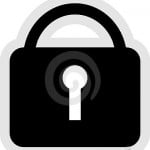 For professional therapists, confidentiality is a big issue. Did you ever think you’d know as much as you do about shredders, locking file cabinets and white noise generators? With electronic communication with clients quickly becoming a norm for our profession, it’s time to add encryption to the list of things we know how to use.
For professional therapists, confidentiality is a big issue. Did you ever think you’d know as much as you do about shredders, locking file cabinets and white noise generators? With electronic communication with clients quickly becoming a norm for our profession, it’s time to add encryption to the list of things we know how to use.
“Encryption” is using a secret code to trade messages. It’s a collaboration towards making a communication private, even when it happens in public spaces. Encryption is a tool that you and your clients can use together to protect your mutual privacy, nurture trust and lower barriers to communication.
More rigorously stated, encryption is the process of taking a communication, such as a letter or phone call, and converting the content of the communication into something that is completely unreadable, and doing it in a way that only the intended recipient can decipher.
The idea of encryption is to allow private communication across non-private channels. If two people are in the same room together, they can whisper or trade notes directly — no need for encryption. But if I want to send a sensitive message across the Internet to a client, I need to make sure that the message is unreadable by any third parties that may get their hands on it, so my client and I use encryption.
What Does Encryption Look Like?
The following is a very simple key for a very simple form of encryption:
| Character: | A | B | C | D | E | F | G | H | … |
| Encoding: | 1 | 2 | 3 | 4 | 5 | 6 | 7 | 8 | … |
The above table describes a code for encrypting written messages. In the original message, whenever you see the letter “a,” you turn it into the number “1.” When you see a “b,” you turn it into a “2,” and so on. When the conversion is complete, your message has been turned into an unreadable mess of numbers.
For example:
| Original Message: | A | C | A | B | C | A | M | E | ||
| Encrypted Message: | 1 | 3 | 1 | 2 | 3 | 1 | 13 | 4 |
If I sent the above encrypted message to you, and a third party intercepted it, they would just be looking at a senseless bunch of numbers. Unless they can break the code or find the key we used to make the message, they can’t read it — our privacy is safe.
The above code would not be secure enough to use in the modern age, of course. Modern encryption uses extremely complicated math that requires a computer to do. Fortunately, we don’t need to understand encryption math to understand how to use encryption in our practices.
